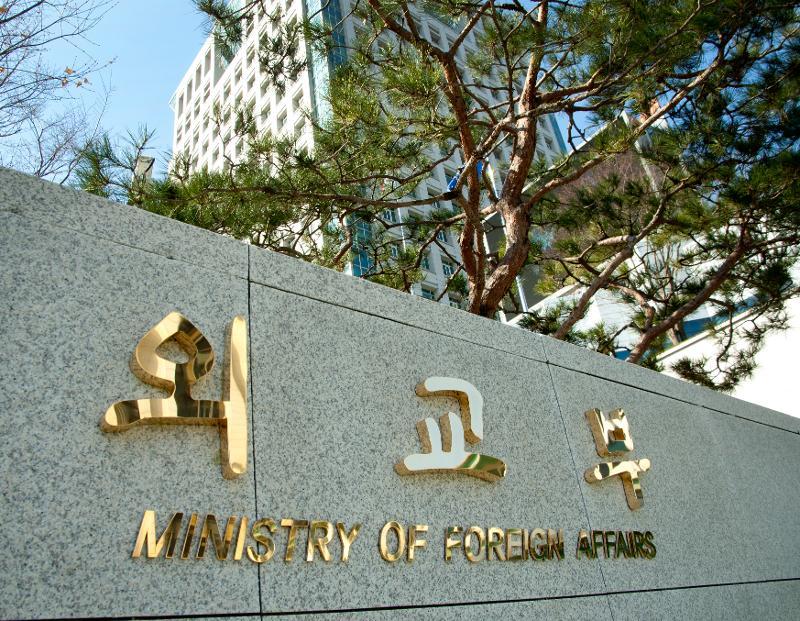- 한국어
- English
- 日本語
- 中文
- العربية
- Español
- Français
- Deutsch
- Pусский
- Tiếng Việt
- Indonesian

The government on Feb. 4 held the inaugural meeting of a joint public-private task force to respond to Japan's planned nomination of Sado Island's mines for designation as UNESCO World Heritage. (Ministry of Foreign Affairs)
By Lee Jihae
The government on Feb. 4 held the inaugural meeting of a joint public-private task force to counter Japan's push to nominate gold mines on Sado Island as UNESCO World Heritage.
Attending the event were director-level officials from seven government agencies -- the Ministry of Foreign Affairs, Ministry of Culture, Sports and Tourism, Ministry of Education, Ministry of the Interior and Safety, Cultural Heritage Administration, Korean Culture and Information Service and National Archives -- and from the Foundation for Victims of Forced Mobilization by Imperial Japan, Northeast Asian History Foundation and Korean National Commission for UNESCO.
The government on Jan. 28 founded the task force led by Ambassador and Deputy Minister of Foreign Affairs for Public Diplomacy Lee Sang-hwa on the same day Japan announced its decision to nominate the mines.
Deputy Minister Lee at the meeting requested consultations with experts in relevant fields and thorough preparation such as collection and analysis of necessary data through close cooperation among government branches and institutions. He also discussed phased response strategies and planned measures by relevant branches and agencies.
The task force will launch working-level meetings on demand in small groups by sector, maintain an effective domestic system of collaboration and actively begin cooperation with the international community.
The Ministry of Foreign Affairs said the attendees at the meeting agreed with the government's stance of urging Japan to first implement follow-up measures after its 2015 inscription of modern industrial sites as World Heritage without delay and faithfully.
The participants also mentioned the "strong decision" adopted in July last year by the World Heritage Committee. When Hashima (Battleship) Island and other modern industrial sites of Japan were inscribed as UNESCO World Heritage, Tokyo pledged to commemorate victims forced to work there including Koreans.
Instead, it set up the Industrial Heritage Information Centre in Tokyo far from the sites. Reneging on Japan's pledge, the center gave the impression of no discrimination or human rights violations against Koreans and thus distorted the island's dark history.
The 21-country committee in July last year adopted a resolution at its 44th session, expressing "strong regrets" over Japan's method of managing its world heritage.
Despite criticism from the committee for breaking its pledge, the Japanese government is trying to inscribe the Sado Island mines, where Koreans were forced to work, on the UNESCO list. The Korean government stressed that Japan's push to re-nominate a forced work site as world heritage is matter of trust of the international community.
The mines on Sado Island, which were known for gold during the Edo period (1603-1867), are where 1,200-2,000 Koreans were forcibly mobilized during the Pacific theater (1941-45) of World War II and abused under brutal conditions. At the height of the war, the mines were used to secure war supplies such as iron and zinc, and imperial Japan exploited on a mass scale Koreans forced to work in the highly dangerous mines.
jihlee08@korea.kr